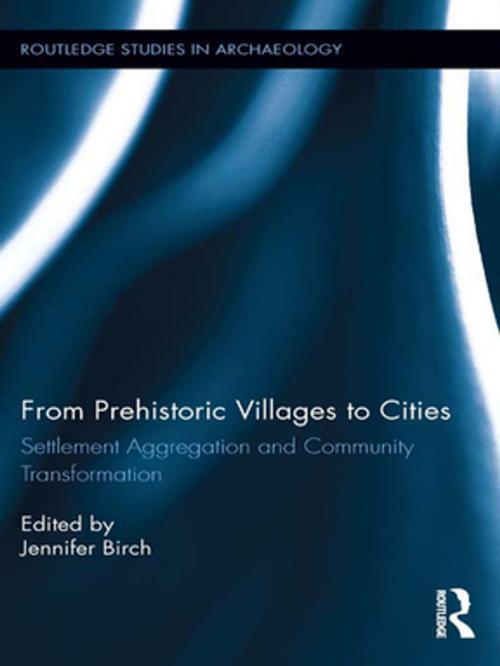From Prehistoric Villages to Cities
Settlement Aggregation and Community Transformation
Nonfiction, Social & Cultural Studies, Social Science, Archaeology, History, Ancient History, Greece, Anthropology| Author: | ISBN: | 9781135045104 | |
| Publisher: | Taylor and Francis | Publication: | April 11, 2014 |
| Imprint: | Routledge | Language: | English |
| Author: | |
| ISBN: | 9781135045104 |
| Publisher: | Taylor and Francis |
| Publication: | April 11, 2014 |
| Imprint: | Routledge |
| Language: | English |
Archaeologists have focused a great deal of attention on explaining the evolution of village societies and the transition to a ‘Neolithic’ way of life. Considerable interest has also concentrated on urbanism and the rise of the earliest cities. Between these two landmarks in human cultural development lies a critical stage in social and political evolution. Throughout world, at various points in time, people living in small, dispersed village communities have come together into larger and more complex social formations. These community aggregates were, essentially, middle-range; situated between the earliest villages and emergent chiefdoms and states. This volume explores the social processes involved in the creation and maintenance of aggregated communities and how they brought about revolutionary transformations that affected virtually every aspect of a society and its culture.
While there have been a number of studies that address coalescence from a regional perspective, less is understood about how aggregated communities functioned internally. The key premise explored in this volume is that large-scale, long-term cultural transformations were ultimately enacted in the context of daily practices, interactions, and what might be otherwise considered the mundane aspects of everyday life. How did these processes play out "on the ground" in diverse and historically contingent settings? What are the strategies and mechanisms that people adopt in order to facilitate living in larger social formations? What changes in social relations occur when people come together? This volume employs a broadly cross-cultural approach to interrogating these questions, employing case studies which span four continents and more than 10,000 years of human history.
Archaeologists have focused a great deal of attention on explaining the evolution of village societies and the transition to a ‘Neolithic’ way of life. Considerable interest has also concentrated on urbanism and the rise of the earliest cities. Between these two landmarks in human cultural development lies a critical stage in social and political evolution. Throughout world, at various points in time, people living in small, dispersed village communities have come together into larger and more complex social formations. These community aggregates were, essentially, middle-range; situated between the earliest villages and emergent chiefdoms and states. This volume explores the social processes involved in the creation and maintenance of aggregated communities and how they brought about revolutionary transformations that affected virtually every aspect of a society and its culture.
While there have been a number of studies that address coalescence from a regional perspective, less is understood about how aggregated communities functioned internally. The key premise explored in this volume is that large-scale, long-term cultural transformations were ultimately enacted in the context of daily practices, interactions, and what might be otherwise considered the mundane aspects of everyday life. How did these processes play out "on the ground" in diverse and historically contingent settings? What are the strategies and mechanisms that people adopt in order to facilitate living in larger social formations? What changes in social relations occur when people come together? This volume employs a broadly cross-cultural approach to interrogating these questions, employing case studies which span four continents and more than 10,000 years of human history.















